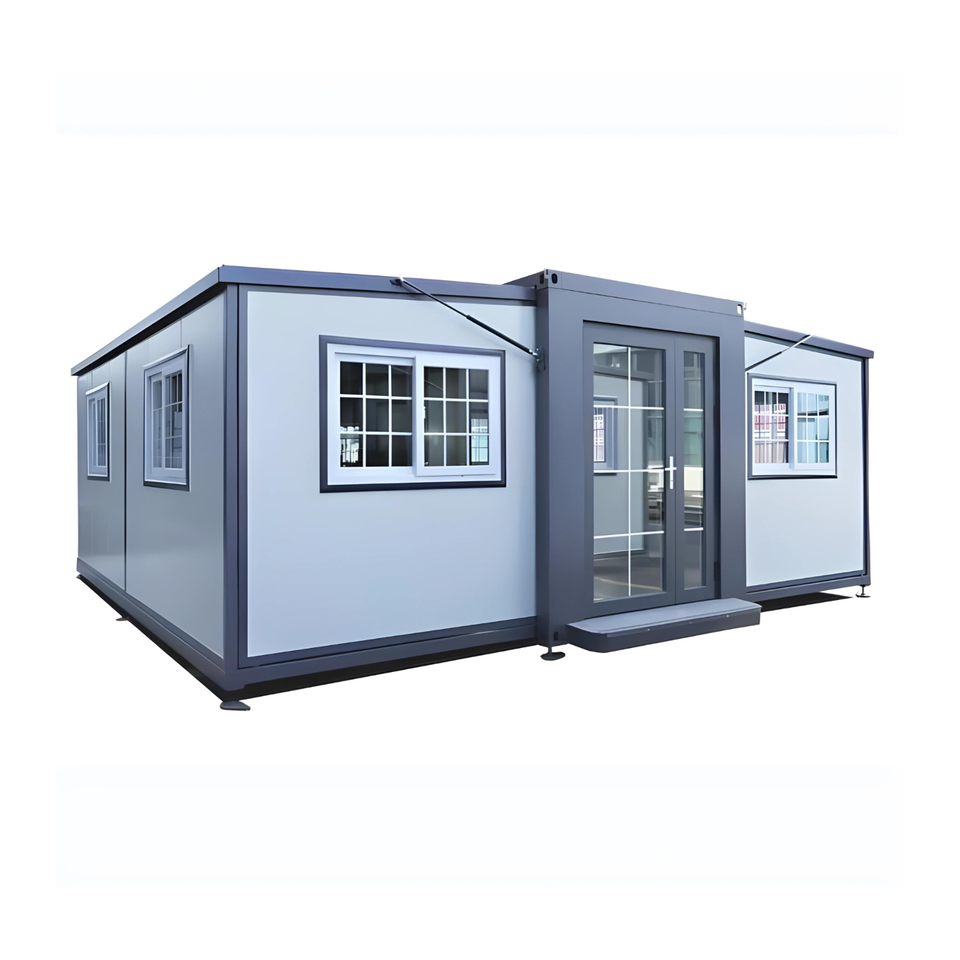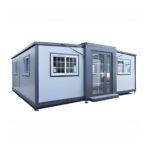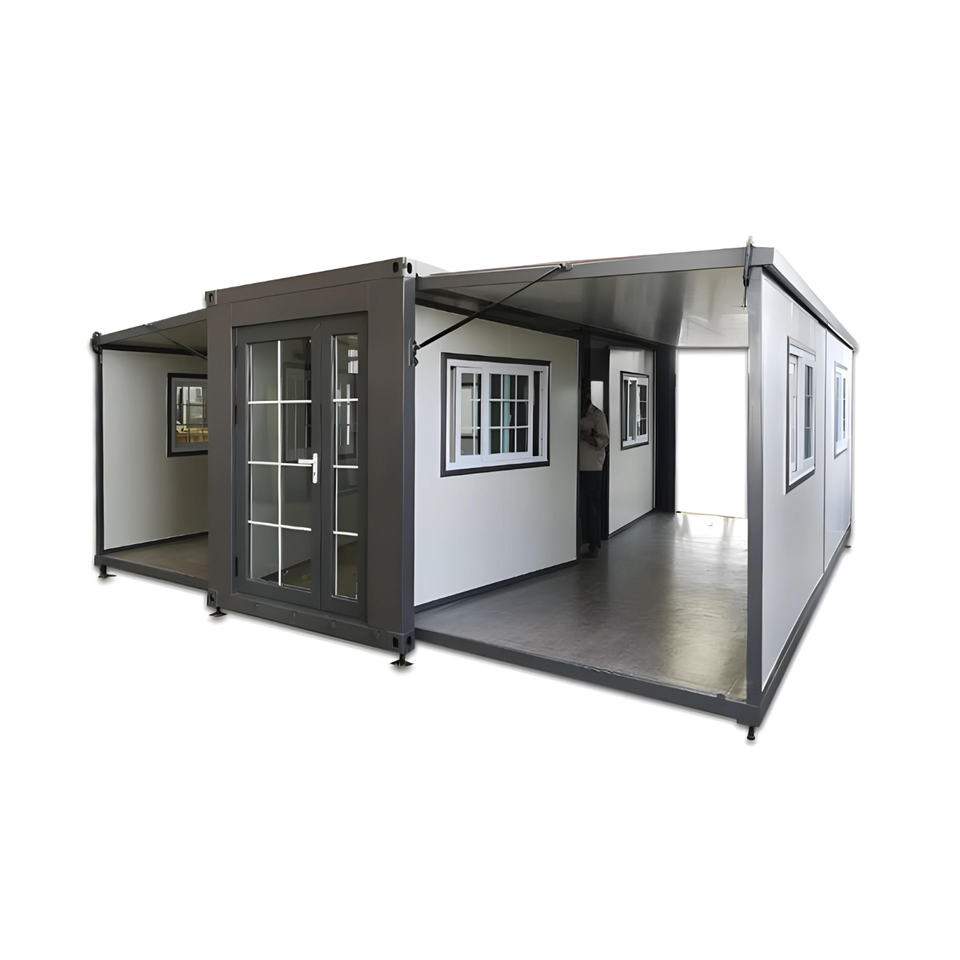
Table of Contents
Selling Portable Prefabricated Tiny Homes on Amazon through FBM (Fulfillment by Merchant) would require careful planning and execution due to the unique nature of the product. Here are generalized steps you could consider
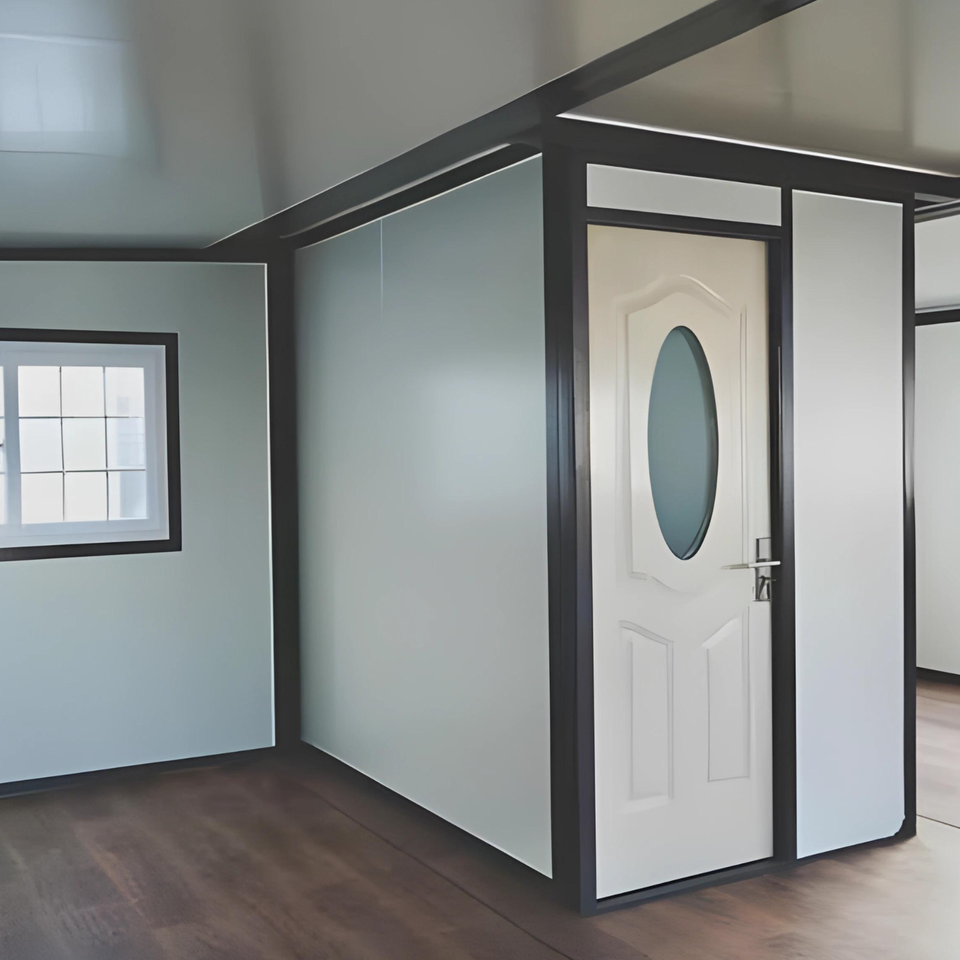
Step 1: Product Research and Development
Product research and development are crucial initial steps when considering selling portable prefabricated tiny homes on Amazon through FBM. Here’s a breakdown of what this step entails:
Market Research: Conduct thorough market research to understand the demand for portable prefabricated tiny homes. Look into factors such as demographics, geographic locations, and consumer preferences. Analyze existing competitors and identify gaps or opportunities in the market.
Product Development or Sourcing: Decide whether you will develop your own portable prefabricated tiny homes or source them from manufacturers or suppliers. If developing your own, work with architects, engineers, and contractors to design and build homes that meet quality standards, regulatory requirements, and customer needs. If sourcing, carefully vet potential suppliers to ensure they can provide high-quality products that align with your specifications.
Compliance and Regulations: Understand the legal and regulatory requirements for selling tiny homes in the jurisdictions where you plan to operate. This includes building codes, zoning regulations, safety standards, and certifications. Ensure that your products comply with all applicable regulations to avoid legal issues and ensure customer safety and satisfaction.
Quality Control: Implement quality control measures to ensure that each portable prefabricated tiny home meets your standards for construction, durability, and aesthetics. Conduct regular inspections and testing to identify and address any issues or defects before shipping the homes to customers.
Cost Analysis: Conduct a thorough cost analysis to determine the feasibility and profitability of selling portable prefabricated tiny homes on Amazon. Consider factors such as manufacturing or sourcing costs, shipping and logistics expenses, overhead costs, and potential profit margins. This will help you set appropriate pricing for your products and make informed business decisions.
Differentiation and Unique Selling Proposition (USP): Identify what sets your portable prefabricated tiny homes apart from competitors and articulate this as your unique selling proposition (USP). Whether it’s innovative design features, eco-friendly materials, customizable options, or affordability, emphasize what makes your products stand out to attract customers on Amazon.
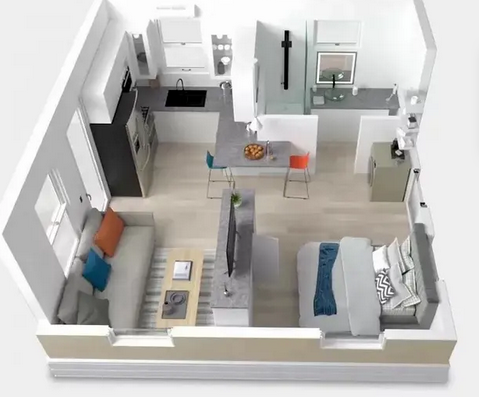
Step 2: Ensure Compliance and Regulations
Ensuring compliance with relevant laws, regulations, and standards is critical when selling portable prefabricated tiny homes on Amazon through FBM. Here’s a breakdown of what this step entails:
Legal Research: Conduct thorough research into the legal requirements for selling portable prefabricated tiny homes in the jurisdictions where you plan to operate. This includes local, state/provincial, and federal regulations related to housing, construction, zoning, and safety standards. Seek guidance from legal professionals specializing in real estate and construction law to ensure full compliance.
Building Codes and Zoning Regulations: Understand the building codes and zoning regulations applicable to tiny homes in the areas where you intend to sell. These regulations dictate the minimum standards for construction, safety, and habitability of residential structures. Ensure that your portable prefabricated tiny homes meet or exceed these requirements to obtain necessary permits and approvals for sale.
Safety Standards and Certifications: Identify any safety standards and certifications required for portable prefabricated tiny homes. This may include certifications for structural integrity, fire safety, electrical wiring, plumbing, insulation, and energy efficiency. Work with accredited testing laboratories and certification bodies to ensure that your products meet all relevant standards and obtain necessary certifications.
Environmental Regulations: Consider environmental regulations and sustainability practices when developing or sourcing portable prefabricated tiny homes. Use eco-friendly materials, construction methods, and energy-efficient features to minimize environmental impact and appeal to environmentally conscious customers.
Insurance and Liability Coverage: Obtain appropriate insurance coverage to protect your business against potential risks and liabilities associated with selling portable prefabricated tiny homes. This may include liability insurance, product liability insurance, property insurance, and errors and omissions insurance. Consult with insurance professionals to assess your coverage needs and secure adequate protection.
Documentation and Disclosures: Prepare comprehensive documentation and disclosures for your portable prefabricated tiny homes, including product specifications, warranties, maintenance instructions, and any relevant legal disclosures. Provide clear and transparent information to customers to ensure informed decision-making and mitigate the risk of disputes or legal issues.
Contractual Agreements: Establish contractual agreements with suppliers, manufacturers, contractors, and other parties involved in the production, distribution, and sale of portable prefabricated tiny homes. Clearly define the rights, obligations, responsibilities, and liabilities of each party to protect your interests and ensure compliance with legal requirements.
Step 3: Create Detailed Product Listings
Creating detailed product listings is essential for effectively showcasing your portable prefabricated tiny homes on Amazon. Here’s a breakdown of what this step entails:
Product Description: Write a compelling and informative product description for each portable prefabricated tiny home. Highlight key features, specifications, and benefits, such as size, layout, construction materials, energy efficiency, and customization options. Use descriptive language to paint a clear picture of what customers can expect from the homes.
High-Quality Images: Take high-quality photographs of each portable prefabricated tiny home from various angles, both inside and outside. Ensure that the images accurately represent the homes’ appearance, design, and quality. Use natural lighting and professional photography techniques to enhance the visual appeal of the listings.
Dimensions and Specifications: Provide detailed dimensions and specifications for each portable prefabricated tiny home, including length, width, height, square footage, room layout, and any additional features or amenities. This information helps customers assess whether the homes meet their space and functional requirements.
Customization Options: If applicable, highlight any customization options available for the portable prefabricated tiny homes, such as color choices, finishes, upgrades, or add-on features. Clearly outline the available options and how customers can request customization to tailor the homes to their preferences.
Shipping and Delivery Information: Clearly communicate shipping and delivery information for the portable prefabricated tiny homes, including shipping methods, estimated delivery times, and any additional costs or restrictions. Provide guidance on how customers can track their orders and what to expect during the delivery process.
Pricing and Financing Options: Set competitive pricing for each portable prefabricated tiny home based on factors such as construction costs, market demand, and profit margins. Consider offering financing options or payment plans to make the homes more accessible to customers who may need assistance with affordability.
SEO Optimization: Optimize product listings for search engines by including relevant keywords and phrases related to portable prefabricated tiny homes, real estate, housing, and related terms. Use descriptive titles, bullet points, and product features to improve search visibility and attract organic traffic to your listings.
Customer Reviews and Testimonials: Encourage satisfied customers to leave positive reviews and testimonials for portable prefabricated tiny homes. Display these reviews prominently on the product listings to build trust and credibility with potential buyers.
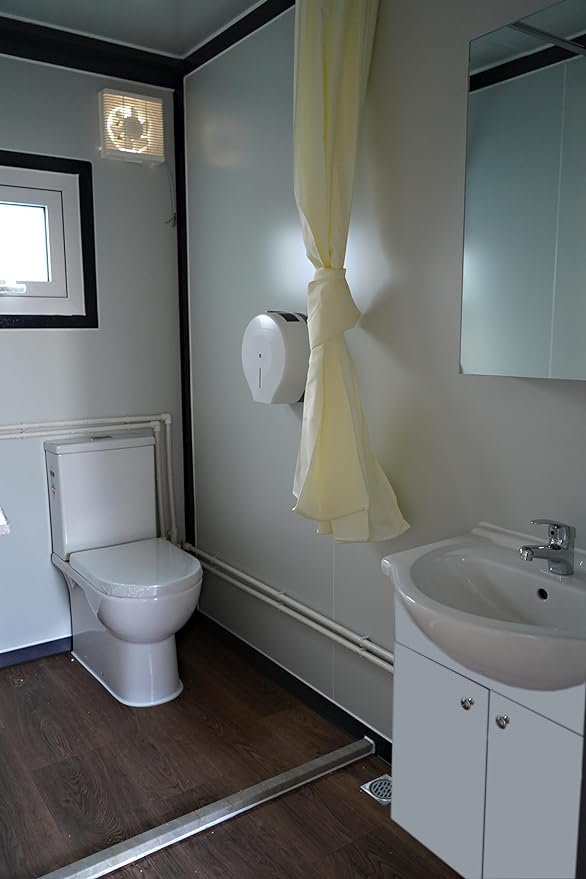
Step 4: Set Pricing and Terms
Setting pricing and establishing clear terms for the sale of portable prefabricated tiny homes on Amazon is crucial for attracting customers and ensuring smooth transactions. Here’s a detailed explanation of this
Competitive Pricing: Research the market to determine competitive pricing for portable prefabricated tiny homes of similar size, quality, and features. Consider factors such as construction costs, materials, labor, shipping expenses, and profit margins when setting prices. Aim to offer competitive pricing that reflects the value proposition of your homes while remaining attractive to potential buyers.
Transparent Pricing Structure: Clearly communicate the pricing structure for each portable prefabricated tiny home in your product listings on Amazon. Break down the total price into components such as base price, optional upgrades or customization costs, shipping fees, taxes, and any other applicable charges. Provide a transparent and itemized breakdown of all costs to avoid confusion and ensure transparency.
Special Offers and Discounts: Consider offering special promotions, discounts, or incentives to attract customers and drive sales of portable prefabricated tiny homes. This could include limited-time sales, bundle deals, free shipping offers, or financing options. Highlight any promotional offers prominently in your product listings to capture attention and encourage conversions.
Payment Methods: Specify accepted payment methods for purchasing portable prefabricated tiny homes on Amazon, such as credit/debit cards, Amazon Pay, PayPal, or financing options. Provide clear instructions on how customers can complete the payment process securely and efficiently. Ensure that your payment processing system complies with Amazon’s policies and safeguards against fraud or unauthorized transactions.
Return and Refund Policies: Establish clear return and refund policies for portable prefabricated tiny homes to reassure customers and mitigate the risk of disputes or dissatisfaction. Clearly outline the terms and conditions for returns, including eligibility criteria, timeframes, restocking fees, and procedures for initiating returns or requesting refunds. Strive to offer flexible and customer-friendly policies that inspire confidence and trust in your brand.
Terms of Sale: Define the terms of sale for portable prefabricated tiny homes, including any applicable warranties, guarantees, or disclaimers. Clearly specify the rights and responsibilities of both parties (seller and buyer) throughout the transaction process, from order placement to delivery and after-sales support. Ensure that your terms of sale are fair, transparent, and compliant with Amazon’s policies and legal requirements.
Customer Communication: Communicate pricing and terms effectively to customers through your product listings, product descriptions, and customer service channels. Address any questions, concerns, or inquiries promptly and professionally to provide clarity and reassurance to potential buyers. Maintain open and transparent communication throughout the sales process to foster positive customer relationships and enhance satisfaction.
Step 5: Manage Inventory and Logistics
Managing inventory and logistics effectively is essential for ensuring a smooth and efficient process when selling portable prefabricated tiny homes on Amazon. Here’s a detailed explanation of this step:
Inventory Management: Maintain accurate and up-to-date inventory records for all portable prefabricated tiny homes available for sale on Amazon. Implement inventory management systems or software to track stock levels, monitor sales trends, and anticipate demand. Regularly reconcile inventory counts to ensure accuracy and prevent overselling or stockouts.
Stock Availability: Ensure that an adequate supply of portable prefabricated tiny homes is available to fulfill customer orders on Amazon. Monitor inventory levels closely and replenish stock as needed to prevent out-of-stock situations and meet customer demand. Coordinate with suppliers or manufacturers to ensure timely production and delivery of new inventory.
Warehousing and Storage: Arrange suitable warehousing and storage facilities to store inventory of portable prefabricated tiny homes securely and efficiently. Consider factors such as space requirements, accessibility, climate control, and security measures to safeguard inventory against damage, theft, or deterioration. Optimize warehouse layout and organization to facilitate easy retrieval and fulfillment of customer orders.
Order Processing: Process customer orders for portable prefabricated tiny homes promptly and accurately upon receipt. Use order management systems or software to streamline order processing workflows, generate packing slips or invoices, and coordinate fulfillment activities. Prioritize order fulfillment based on shipping preferences, delivery deadlines, and customer specifications.
Shipping and Delivery: Coordinate shipping and delivery logistics for portable prefabricated tiny homes sold on Amazon. Select reliable shipping carriers or logistics providers to transport homes safely and efficiently to customers’ designated addresses. Ensure timely delivery of orders within the specified timeframes to meet customer expectations and uphold service level agreements.
Tracking and Monitoring: Track the status of shipments and monitor the movement of portable prefabricated tiny homes throughout the shipping and delivery process. Utilize tracking numbers or shipment tracking tools to monitor shipment progress, identify any delays or issues, and proactively communicate updates to customers. Keep customers informed about the status of their orders and provide tracking information for their reference.
Customer Support: Provide responsive and attentive customer support to address any inquiries, concerns, or issues related to inventory, logistics, or order fulfillment. Offer multiple channels for customer communication, such as email, phone, or live chat, and ensure that customer service representatives are trained to handle inquiries professionally and efficiently. Resolve any shipping-related issues or delivery discrepancies promptly to maintain customer satisfaction.
Step 6: Handle Customer Inquiries and Orders
Handling customer inquiries and orders effectively is essential for providing a positive buying experience and building trust with customers when selling portable prefabricated tiny homes on Amazon. Here’s a detailed explanation of this step:
Prompt Response: Respond to customer inquiries, messages, and order-related communications promptly and professionally. Aim to reply to customer inquiries within 24 hours or sooner to demonstrate responsiveness and attentiveness to their needs.
Clear Communication: Communicate clearly and transparently with customers regarding product information, pricing, shipping details, and any other relevant information. Provide accurate and detailed responses to customer inquiries to address their concerns and help them make informed purchasing decisions.
Order Confirmation: Confirm receipt of customer orders promptly and provide confirmation details, including order number, expected delivery date, and any relevant order-related information. Confirming orders promptly reassures customers that their purchase has been successfully processed and that their order is being prepared for shipment.
Order Status Updates: Keep customers informed about the status of their orders throughout the order processing and fulfillment process. Provide regular updates on order status, shipping progress, and delivery tracking information to ensure transparency and manage customer expectations.
Address Customer Concerns: Address any customer concerns or issues related to their orders promptly and effectively. Listen attentively to customer feedback, address any issues or complaints promptly and professionally, and take appropriate actions to resolve the situation to the customer’s satisfaction.
Customization Requests: Accommodate customization requests from customers whenever possible, such as specific color preferences, optional upgrades, or personalized features. Clearly communicate any customization options available and provide guidance on how customers can request customizations to meet their individual preferences.
Payment and Billing Inquiries: Assist customers with payment and billing inquiries, including questions about payment methods, transaction details, and billing statements. Provide accurate information and guidance to help customers resolve any payment-related issues or concerns promptly.
Order Modifications and Cancellations: Process order modifications or cancellations promptly and accurately upon customer request. Ensure that customers have the option to modify or cancel their orders within a reasonable timeframe and provide clear instructions on how to initiate these changes.
Post-Sale Support: Offer post-sale support to customers to address any questions, concerns, or issues that may arise after their purchase. Provide assistance with product setup, usage instructions, troubleshooting, and warranty inquiries to ensure a smooth and satisfactory post-purchase experience.
Professionalism and Courtesy: Interact with customers professionally and courteously at all times, both in written communications and verbal interactions. Maintain a positive and helpful demeanor, even when dealing with challenging or difficult situations, to leave a favorable impression on customers and uphold your brand reputation.
Step 7: Provide Excellent Customer Service
Providing excellent customer service is crucial for maintaining customer satisfaction and building a positive reputation when selling portable prefabricated tiny homes on Amazon. Here’s a detailed explanation of this step:
Timely Responses: Respond to customer inquiries, messages, and concerns promptly and efficiently. Aim to address customer queries within 24 hours or sooner to demonstrate responsiveness and dedication to customer satisfaction.
Clear Communication: Communicate clearly and transparently with customers regarding product information, pricing, shipping details, and any other relevant information. Provide accurate and detailed responses to customer inquiries to ensure clarity and avoid misunderstandings.
Professionalism and Courtesy: Interact with customers professionally and courteously at all times, both in written communications and verbal interactions. Maintain a positive and helpful demeanor, even when dealing with challenging or difficult situations, to leave a favorable impression on customers.
Product Knowledge: Possess in-depth knowledge about the portable prefabricated tiny homes you’re selling, including features, specifications, customization options, and warranty information. Be prepared to answer customer questions accurately and provide helpful guidance and recommendations based on their needs and preferences.
Order Tracking and Updates: Keep customers informed about the status of their orders throughout the order processing and fulfillment process. Provide regular updates on order status, shipping progress, and delivery tracking information to ensure transparency and manage customer expectations.
Problem Resolution: Address any customer concerns, issues, or complaints promptly and effectively. Listen attentively to customer feedback, empathize with their concerns, and take proactive steps to resolve the situation to the customer’s satisfaction.
Flexibility and Accommodation: Be flexible and accommodating in meeting customer needs and preferences, such as providing customization options, offering alternative solutions, or arranging special accommodations when necessary. Strive to exceed customer expectations whenever possible to delight and impress them.
Post-Sale Support: Offer post-sale support to customers to assist with product setup, usage instructions, troubleshooting, and warranty inquiries. Provide helpful and informative guidance to ensure a smooth and satisfactory post-purchase experience for customers.
Feedback Collection: Encourage customers to provide feedback and reviews about their purchase experience and the quality of the portable prefabricated tiny homes they received. Actively solicit feedback through follow-up emails, surveys, or review requests to gather valuable insights and improve your products and services.
Continuous Improvement: Continuously evaluate and improve your customer service processes and practices based on customer feedback, performance metrics, and industry best practices. Identify areas for improvement and implement proactive measures to enhance the overall customer experience and drive customer satisfaction and loyalty.
Step 8: Optimize Product Listings and Marketing
Optimizing product listings and implementing effective marketing strategies are essential for maximizing visibility, driving traffic, and increasing sales when selling portable prefabricated tiny homes on Amazon. Here’s a detailed explanation of this step:
Keyword Optimization: Conduct keyword research to identify relevant search terms and phrases that potential customers are using to search for portable prefabricated tiny homes on Amazon. Incorporate these keywords strategically into your product titles, bullet points, descriptions, and backend search terms to improve visibility and search ranking.
Compelling Product Titles: Create descriptive and compelling product titles that accurately convey the key features, benefits, and uniqueness of each portable prefabricated tiny home. Use relevant keywords and include persuasive language to capture the attention of potential buyers and encourage clicks.
High-Quality Images: Use high-quality images that showcase the portable prefabricated tiny homes from multiple angles, both inside and outside. Ensure that images accurately represent the homes’ appearance, design, and quality to inspire confidence and trust in potential buyers.
Informative Product Descriptions: Write detailed and informative product descriptions that highlight the features, specifications, and benefits of each portable prefabricated tiny home. Use clear and concise language to communicate key selling points and address common customer questions or concerns.
Bullet Points and Key Features: Utilize bullet points to present key features and benefits of the portable prefabricated tiny homes in a scannable format. Highlight unique selling points, such as construction materials, energy efficiency, customization options, and warranty coverage, to attract and engage potential buyers.
A+ Content (Enhanced Brand Content): If eligible, leverage A+ Content (Enhanced Brand Content) to enhance your product listings with visually appealing multimedia elements, such as enhanced images, comparison charts, and engaging videos. A+ Content can help differentiate your listings, improve conversion rates, and elevate your brand presence on Amazon.
PPC Advertising (Sponsored Products): Consider running PPC (Pay-Per-Click) advertising campaigns using Amazon’s Sponsored Products ads to increase visibility and drive targeted traffic to your portable prefabricated tiny home listings. Set up targeted ad campaigns based on relevant keywords, optimize ad creative and targeting options, and monitor performance metrics to maximize ROI.
Social Media Promotion: Promote your portable prefabricated tiny homes on social media platforms, such as Facebook, Instagram, and Pinterest, to reach a broader audience and generate interest. Share compelling visuals, customer testimonials, and promotional offers to engage with potential buyers and drive traffic to your Amazon listings.
Email Marketing: Build an email list of interested prospects and previous customers and leverage email marketing campaigns to promote your portable prefabricated tiny homes, announce new product launches, and offer exclusive discounts or promotions. Personalize email content and segment your audience to deliver targeted messages and drive conversions.
Customer Reviews and Feedback: Encourage satisfied customers to leave positive reviews and feedback about their purchase experience and the quality of the portable prefabricated tiny homes they received. Positive reviews can boost credibility, improve search ranking, and influence purchasing decisions for potential buyers.
Step 9: Monitor Performance
Monitoring the performance of your sales efforts on Amazon is crucial for understanding what’s working well and identifying areas for improvement. Here’s a detailed explanation of this step:
Sales Metrics: Track key sales metrics such as total revenue, units sold, average order value, and conversion rate to gauge the overall performance of your portable prefabricated tiny home listings on Amazon. Analyze trends over time to identify patterns and fluctuations in sales volume.
Inventory Management: Monitor inventory levels closely to ensure that an adequate supply of portable prefabricated tiny homes is available to meet customer demand. Implement inventory management systems or software to track stock levels, replenish inventory as needed, and prevent stockouts or overselling.
Customer Feedback: Pay attention to customer feedback, reviews, and ratings for your portable prefabricated tiny homes on Amazon. Monitor customer reviews regularly to identify common themes, address any issues or concerns raised by customers, and make improvements to product quality or customer service as necessary.
Competitor Analysis: Keep an eye on competitor listings and pricing to stay informed about market trends and competitive landscape. Analyze competitor product offerings, pricing strategies, promotional activities, and customer reviews to identify areas where you can differentiate and improve your own listings.
Advertising Performance: Evaluate the performance of any advertising campaigns you’re running on Amazon, such as Sponsored Products ads. Monitor key metrics such as ad spend, click-through rate (CTR), conversion rate, and return on ad spend (ROAS) to assess the effectiveness of your advertising efforts and optimize campaign performance.
Traffic Sources: Analyze traffic sources to your Amazon listings to understand where your customers are coming from and how they’re finding your products. Track metrics such as organic search traffic, direct traffic, referral traffic, and paid traffic to identify the most effective channels for driving traffic and sales.
Conversion Funnel: Examine the conversion funnel to identify any bottlenecks or barriers that may be hindering conversion rates. Analyze metrics such as click-through rate (CTR), add-to-cart rate, and checkout abandonment rate to pinpoint areas for optimization and improve overall conversion performance.
Seasonal Trends: Monitor seasonal trends and fluctuations in demand for portable prefabricated tiny homes throughout the year. Anticipate seasonal spikes or lulls in sales volume and adjust your inventory levels, pricing, and marketing strategies accordingly to capitalize on opportunities and mitigate risks.
Performance Goals: Set specific, measurable performance goals for your portable prefabricated tiny home listings on Amazon, such as sales targets, revenue objectives, or customer satisfaction metrics. Regularly review progress against these goals and adjust your strategies as needed to stay on track and achieve desired outcomes.
Continuous Improvement: Use insights gathered from performance monitoring to inform strategic decision-making and drive continuous improvement. Experiment with different tactics, strategies, and optimizations to optimize sales performance, enhance customer satisfaction, and grow your business on Amazon over time.
Step 10: Adapt and Pivot
Adapting and pivoting your strategies based on changing market conditions, customer feedback, and performance data is essential for maintaining relevance and competitiveness when selling portable prefabricated tiny homes on Amazon. Here’s a detailed explanation of this step:
Market Trends: Stay informed about evolving market trends, consumer preferences, and industry developments related to portable prefabricated tiny homes. Monitor changes in demand, emerging competitors, new product innovations, and shifts in consumer behavior to anticipate market dynamics and adapt your strategies accordingly.
Customer Feedback: Listen to customer feedback and take it into account when making decisions about product improvements, pricing adjustments, or marketing initiatives. Pay attention to common themes, pain points, and suggestions raised by customers in reviews, messages, or surveys, and use this feedback to inform product development and customer service enhancements.
Competitive Analysis: Continuously monitor competitor activity and performance to stay informed about their strategies, offerings, and market positioning. Analyze competitor product listings, pricing strategies, promotional tactics, and customer reviews to identify areas where you can differentiate and innovate to stay ahead of the competition.
Performance Evaluation: Regularly evaluate the performance of your portable prefabricated tiny home listings on Amazon and assess the effectiveness of your sales and marketing strategies. Analyze key performance metrics, identify trends and patterns, and pinpoint areas for improvement or optimization to maximize sales and profitability.
Experimentation and Innovation: Embrace a culture of experimentation and innovation by testing new ideas, tactics, and strategies to see what works best for your business. Experiment with different product variations, pricing models, advertising channels, and promotional offers to uncover new opportunities for growth and differentiation.
Flexibility and Agility: Remain flexible and agile in response to changing circumstances, unexpected challenges, or unforeseen opportunities. Be prepared to pivot your strategies quickly and adapt to evolving market conditions, customer preferences, or competitive pressures to maintain relevance and competitiveness in the marketplace.
Continuous Learning: Commit to continuous learning and professional development to stay ahead of the curve and expand your knowledge and skills in e-commerce, marketing, sales, and business management. Stay up to date with industry trends, best practices, and emerging technologies through online courses, industry publications, networking events, and professional associations.
Feedback Loop: Establish a feedback loop to gather insights from customers, employees, partners, and stakeholders and use this feedback to drive continuous improvement and innovation. Solicit input from various sources, listen actively to different perspectives, and use feedback to inform decision-making and strategy development.
Risk Management: Proactively identify and mitigate risks that may impact your business, such as supply chain disruptions, regulatory changes, or economic uncertainties. Develop contingency plans and risk mitigation strategies to minimize the impact of potential threats and safeguard your business operations and continuity.
Long-Term Vision: Maintain a long-term perspective and focus on building a sustainable and resilient business that can withstand challenges and capitalize on opportunities over time. Set ambitious yet achievable goals, invest in building strong relationships with customers and partners, and prioritize investments in areas that drive long-term growth and value creation.
Pros:
Flexibility: Adapting and pivoting allows businesses to respond quickly to changing market conditions, customer preferences, and competitive dynamics.
Innovation: Embracing experimentation and innovation fosters creativity and enables businesses to uncover new opportunities for growth and differentiation.
Relevance: By staying attuned to market trends and customer feedback, businesses can maintain relevance and meet evolving customer needs and expectations.
Competitiveness: Adapting strategies helps businesses stay ahead of competitors by continuously refining their offerings, pricing, and marketing tactics.
Resilience: Businesses that are adaptable and agile are better equipped to withstand unexpected challenges, disruptions, and economic uncertainties.
Long-Term Success: A commitment to continuous improvement and learning fosters long-term success and sustainability in the ever-changing landscape of e-commerce.
Cons:
Risk of Overreaction: Rapidly changing strategies can sometimes lead to overreaction or knee-jerk decisions based on short-term trends rather than long-term strategic goals.
Resource Intensive: Constantly adapting and pivoting strategies may require significant time, effort, and resources, which could strain operational capacity and stretch thin the organization.
Loss of Focus: Focusing too much on adapting to external changes may detract from core business objectives and dilute the company’s brand identity or value proposition.
Uncertainty: The dynamic nature of adaptation and pivoting strategies introduces uncertainty and unpredictability, making it challenging to forecast outcomes and plan effectively.
Resistance to Change: Employees and stakeholders may resist frequent changes to strategies or processes, leading to resistance, confusion, or disengagement within the organization.
Inconsistent Messaging: Rapid shifts in strategies may result in inconsistent messaging or brand positioning, causing confusion among customers and eroding brand trust and loyalty.
Conclusion
adapting and pivoting strategies when selling portable prefabricated tiny homes on Amazon can be a powerful way to stay competitive, meet customer needs, and drive long-term success. By remaining flexible, innovative, and responsive to changing market dynamics, businesses can seize new opportunities, overcome challenges, and position themselves for growth in the dynamic e-commerce landscape.
However, it’s important to approach adaptation and pivoting with careful consideration, weighing the pros and cons and ensuring that changes align with overarching business objectives and values. Striking a balance between agility and stability is key to navigating change effectively while maintaining consistency, coherence, and resilience in the face of uncertainty.
Ultimately, businesses that embrace adaptation and pivoting as part of their strategic approach can cultivate a culture of continuous improvement, foster innovation, and build a sustainable competitive advantage in selling portable prefabricated tiny homes on Amazon. By staying attuned to market trends, customer feedback, and emerging opportunities, these businesses can thrive and succeed in the ever-evolving world of e-commerce. read more
visit SGK

